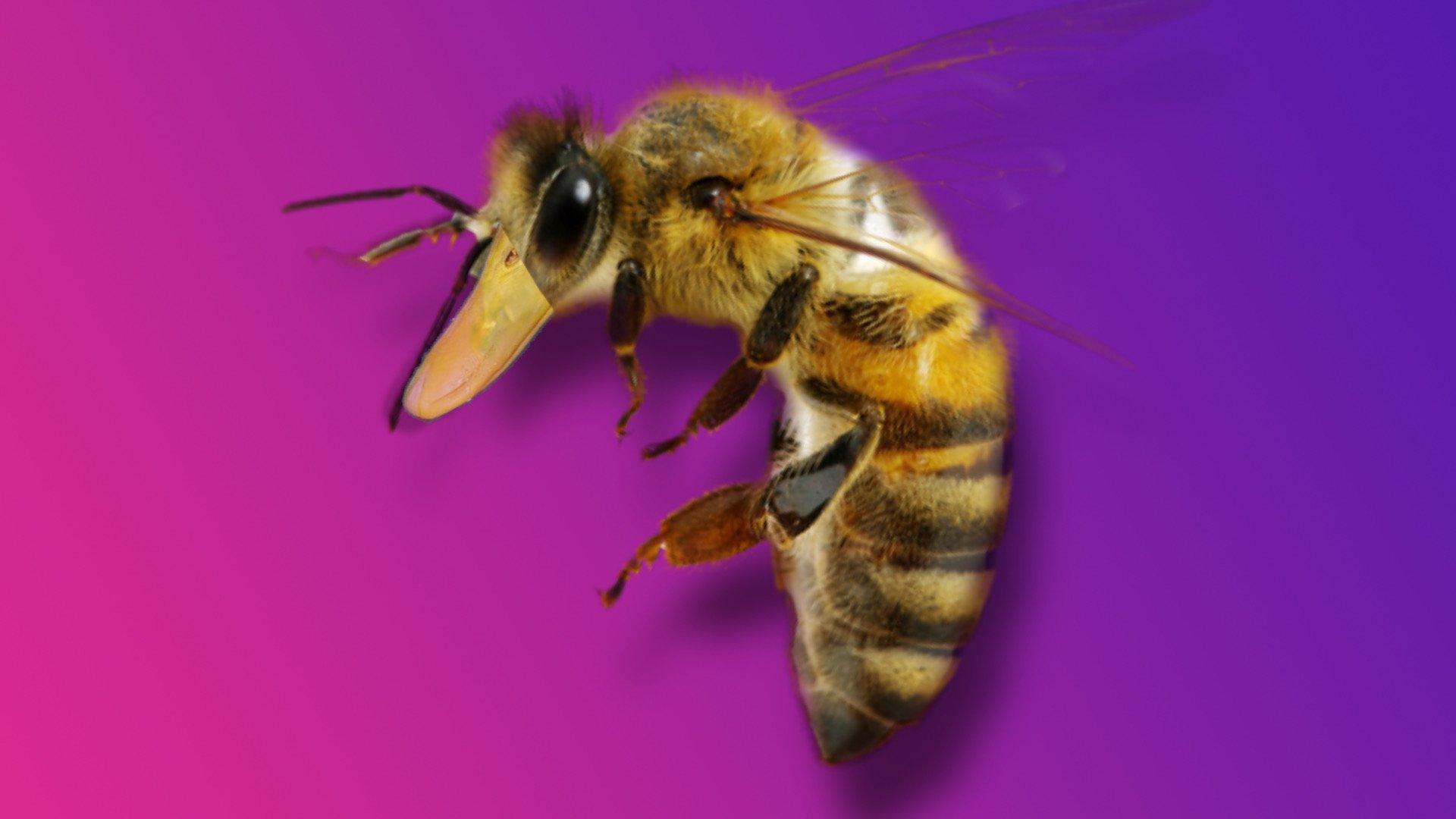Bumblebees spotted building nests in winter 'due to climate change'
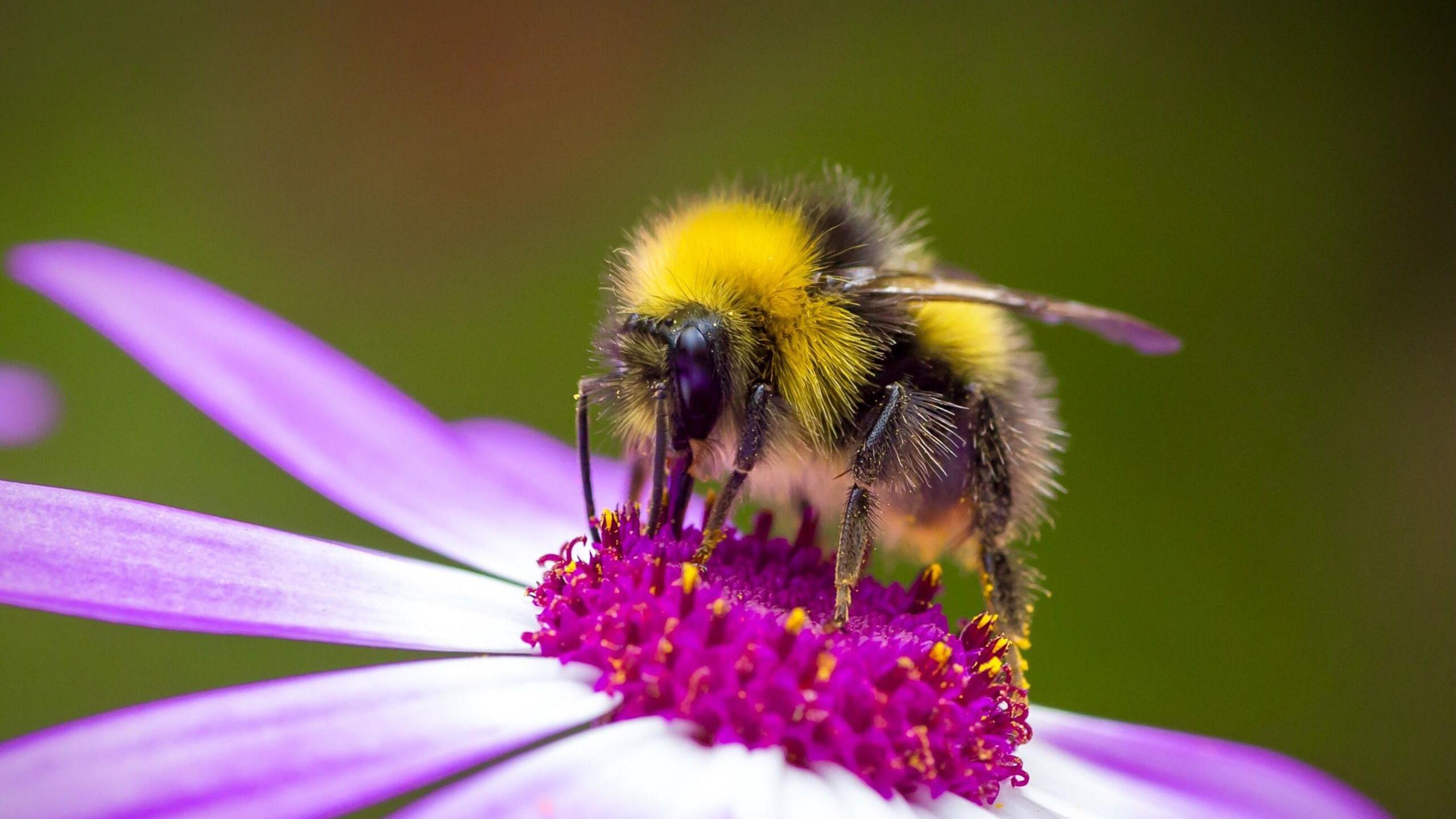
The mild winter weather has been confusing the bees
- Published
The UK weather can be unpredictable. After a mild winter, there's now snow and cold temperatures.
That can be confusing for many species, like bees.
Now, according to conservationists, bumblebees have been starting to build nests in winter due to climate change, when they would normally be hibernating until spring.
This isn't good news, as charity Buglife says the nests are at a "high risk" of failing because of the lack of flowers for them to collect nectar and pollen from, and the colder weather.
More stories about pollinator heroes
Bees' Needs Week: How can we help bees?
- Published22 July 2022
London's first pollinator count aims to protect the city's insects
- Published1 July 2024
Moths are super pollinators too, did you know?
- Published8 June 2023
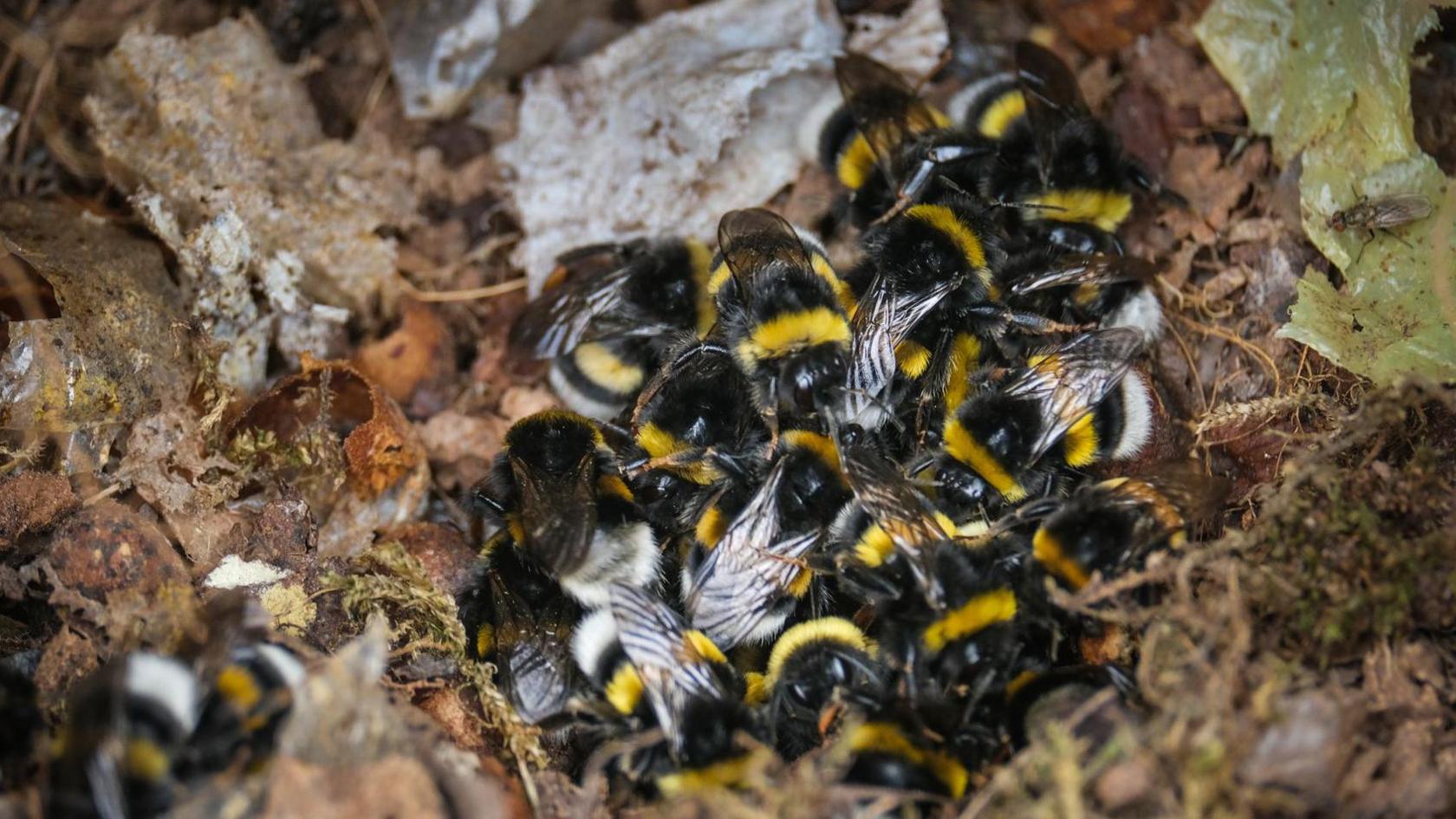
Bumblebee nests are known for being quite messy and disorganised - a bit like some rooms in a house!
Where have bumblebees been spotted making winter nests?
Buglife said active worker bumblebees, which do most of the work in a nest, were seen in Aberdeen in Scotland during mild weather over the Christmas break.
Paul Hetherington from the charity said: "The fact that there are active workers means not only have the queens awakened from hibernation, but they have gone to the extent of starting new nests."
Buglife said at least two of the UK's 25 species of bumblebee were believed to have started nest-building early.
A lack of flowers and wintry weather could leave the nests at risk of collapse and kill the bees.
This means there would be no new queen bees, which are the mothers of most of the bees in a hive.
So starting to build nests in the winter could add to the decline in bumblebee numbers.
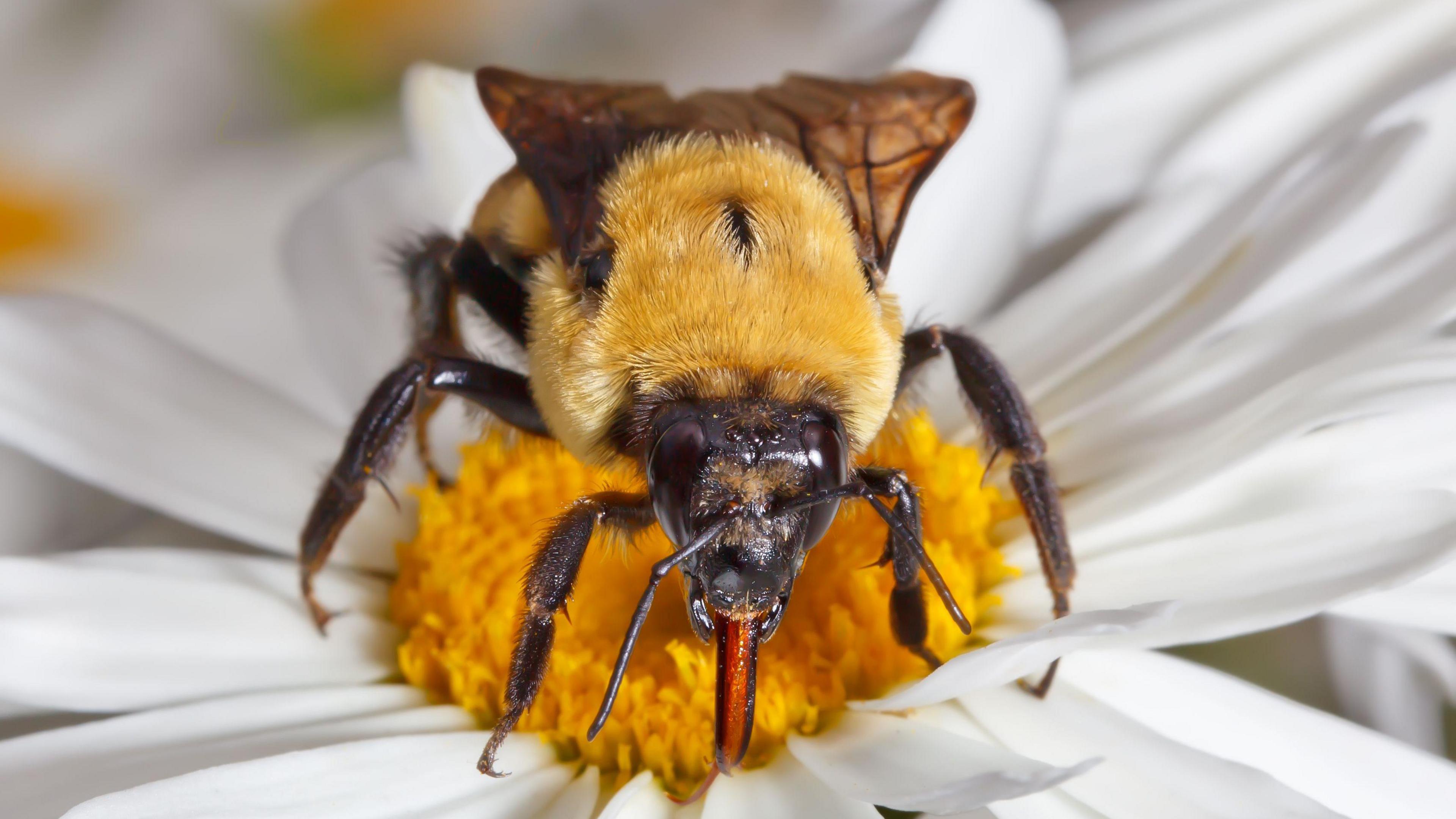
Bumblebees have different sizes of tongue, which means they enjoy collecting nectar from a range of plants
What can we do to help bumblebees?
According to the Wildlife Trusts, bumblebees look for certain types of flowers.
Those with shorter tongues need open flowers like daisies where they can easily get to the nectar.
Those with long tongues can enjoy nectar from deeper flowers like honeysuckle.
Having some early and some late blooming flowers in your garden will help to prolong the nectar season, so it's a good idea to plant shrubs that can flower at different times.
Those that flower in the winter include ivy, hyssop, ice plant, sweet scabious and Michaelmas daisy.
Planting groups of the same shrub together will help bees recognise them so they'll come back to visit.
More about brilliant bees
- Published21 January 2022
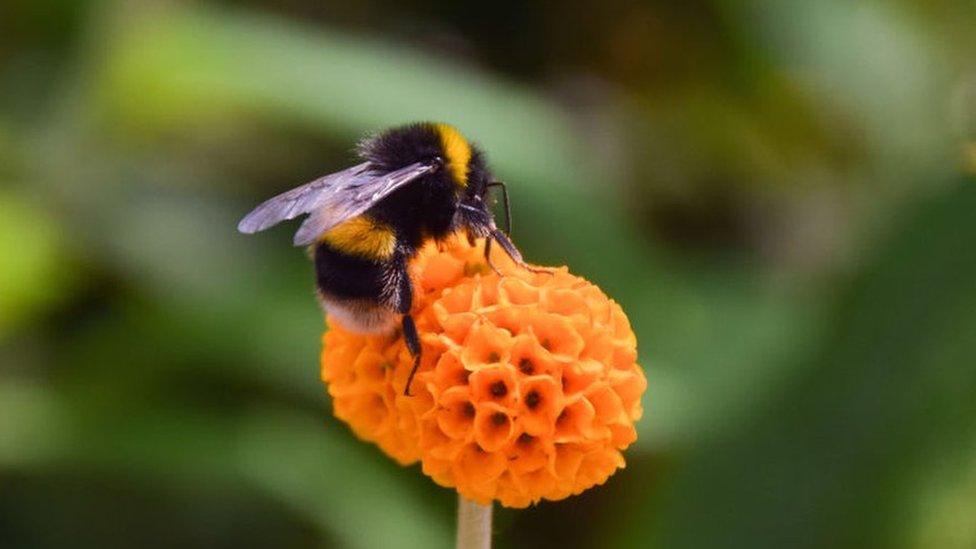
- Published29 April 2020
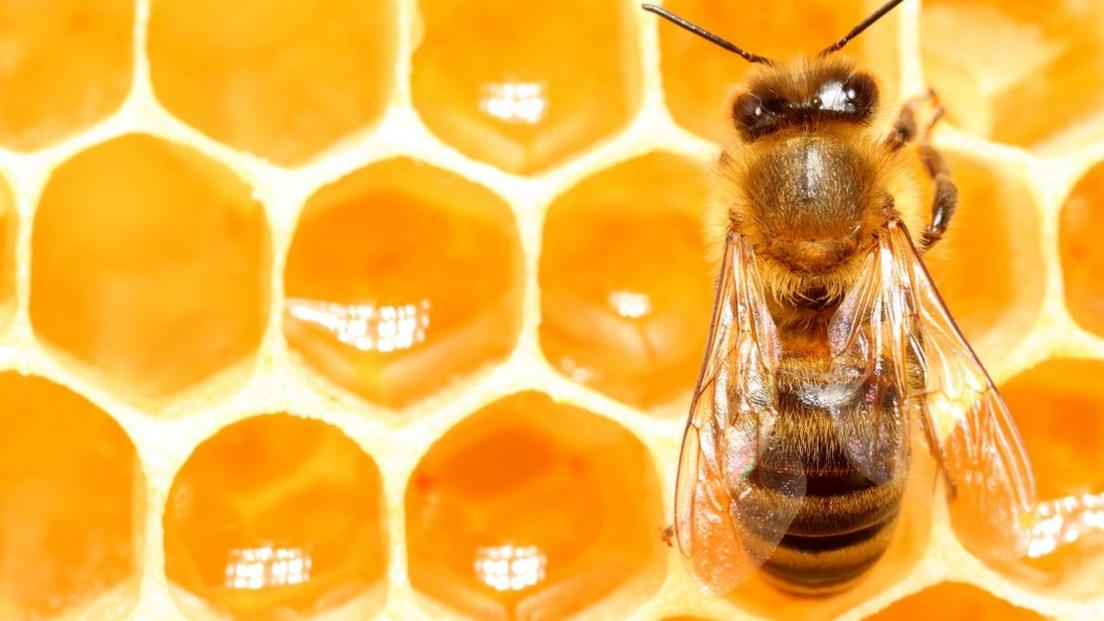
- Published16 June 2020
